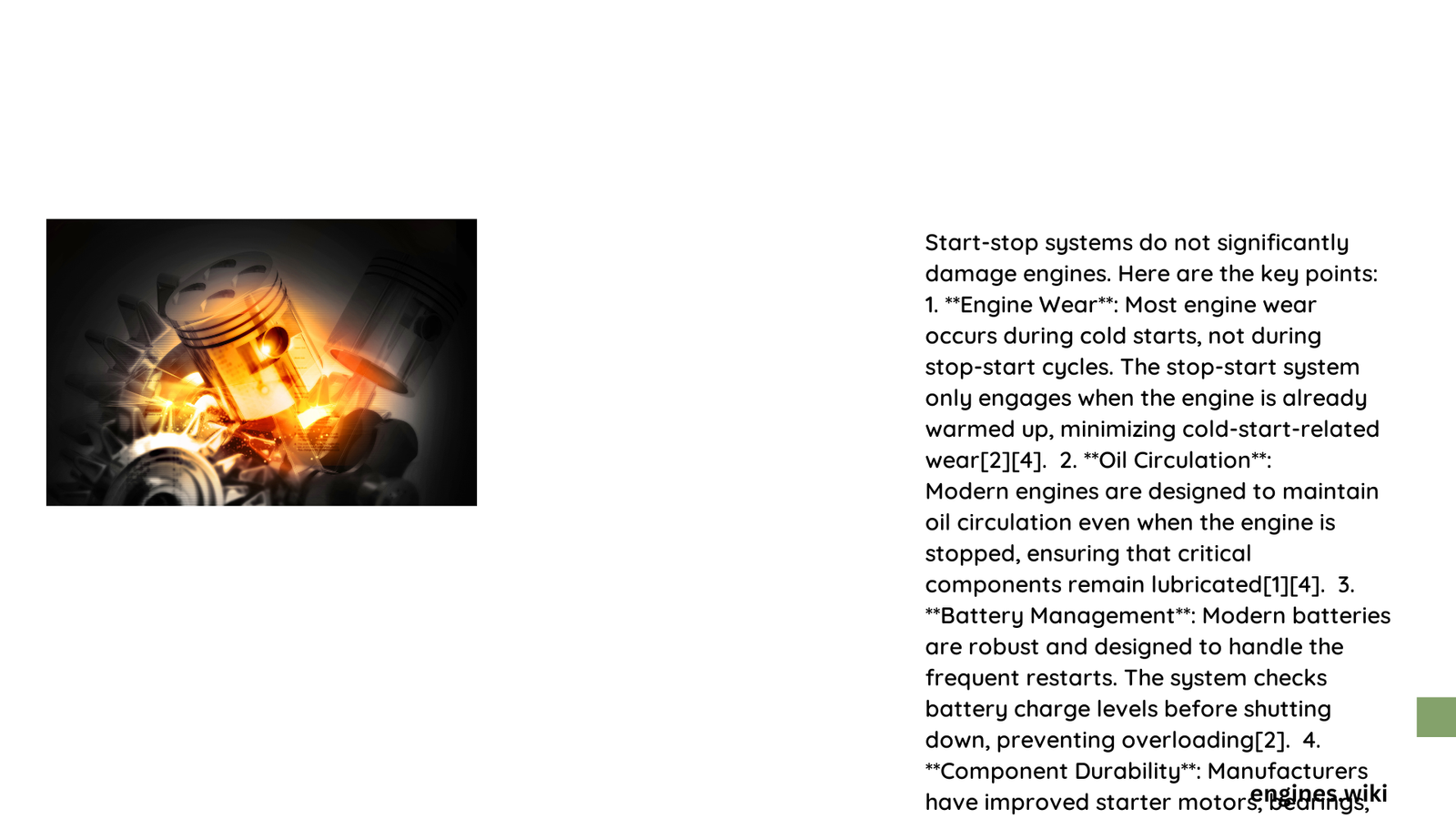Modern vehicles equipped with start-stop technology have raised significant concerns among car owners about potential engine damage. Contrary to popular belief, advanced engineering and sophisticated component design have effectively mitigated traditional wear concerns, making start-stop systems a reliable and efficient feature in contemporary automobiles. This comprehensive analysis explores the intricate relationship between start-stop mechanisms and engine longevity.
What Happens to Engine Components During Start-Stop Cycles?
Are Crankshaft and Bearings Vulnerable?
Start-stop technology introduces unique mechanical dynamics that initially seem problematic. However, manufacturers have developed innovative solutions to address potential wear:
- Advanced Bearing Materials: Self-lubricating bearings reduce friction by up to 50%
- Optimized Metal Coatings: Specialized surface treatments minimize metal-to-metal contact
- Precision Engineering: Engineered tolerances accommodate frequent start-stop cycles
| Component | Traditional Wear | Start-Stop Optimized Wear |
|---|---|---|
| Crankshaft | High Friction | Reduced Friction |
| Main Bearings | Standard Lifespan | Extended Lifespan |
| Starter Motor | Conventional Design | High-Durability Design |
Does Frequent Stopping and Starting Stress the Engine?
Modern start-stop systems incorporate multiple protective mechanisms:
- Intelligent Restart Algorithms: Minimize mechanical stress during engine restart
- Enhanced Lubrication Systems: Maintain oil film integrity between components
- Thermal Management: Regulate engine temperature during frequent stops
What Research Reveals About Long-Term Reliability?
Extensive studies and automotive engineering research demonstrate that well-designed start-stop systems do not significantly compromise engine longevity:
- Average vehicles experience approximately 50,000 traditional start cycles
- Start-stop equipped vehicles can withstand up to 500,000 stop-start events
- No substantial evidence indicates premature engine wear
How Do Manufacturers Protect Against Potential Damage?
Automotive engineers have implemented comprehensive strategies:
- Specialized Starter Motors: Designed for increased cycle tolerance
- Advanced Battery Technologies: Manage electrical load more efficiently
- Predictive Maintenance Algorithms: Monitor system performance continuously
Can Proper Maintenance Mitigate Potential Risks?
Regular maintenance remains crucial for preserving engine health:
- Adhere to manufacturer-recommended service intervals
- Use high-quality synthetic oils
- Perform periodic starter motor and battery inspections
- Monitor electrical system performance
Key Takeaways for Vehicle Owners

- Start-stop technology does not inherently damage modern engines
- Sophisticated engineering has addressed traditional wear concerns
- Proper maintenance ensures optimal system performance
- Benefits include improved fuel efficiency and reduced emissions
Practical Recommendations
- Trust manufacturer engineering
- Follow recommended maintenance schedules
- Use high-quality automotive components
- Monitor vehicle performance periodically
Technical Insights
The perception that start-stop technology damages engines stems from outdated understanding of mechanical systems. Contemporary automotive engineering has transformed these mechanisms into reliable, efficient technologies that enhance overall vehicle performance.
Conclusion
Start-stop technology represents a significant advancement in automotive engineering, designed to minimize environmental impact without compromising engine integrity. Vehicle owners can confidently embrace this technology, knowing that extensive research and innovative design protect their automotive investment.
